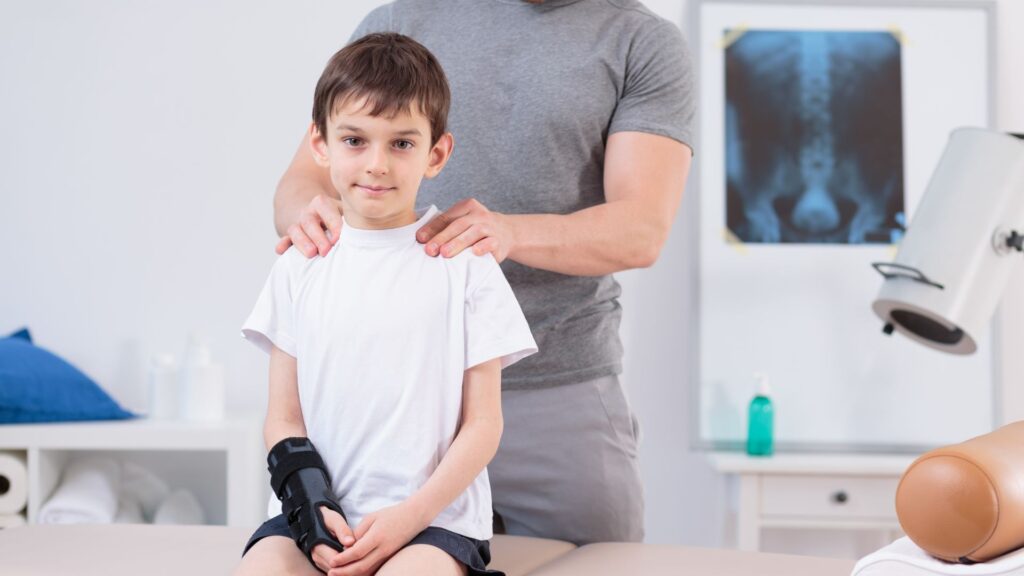
Arthritis is a condition often associated with older adults, but did you know that children can also develop this chronic inflammatory disease? Juvenile arthritis, also known as pediatric arthritis, is a type of arthritis that affects children under the age of 16. July is Juvenile Arthritis Awareness Month, and it is a time to raise awareness about this condition, its symptoms, and the impact it can have on children and their families.
Growing Up With Arthritis
Living with arthritis as a child can be challenging and impact various aspects of daily life, including physical activity, social interactions, and academic performance. The Arthritis Foundation states that up to 300,000 children in the United States are affected by juvenile arthritis, with symptoms such as joint pain, stiffness, and swelling that can make it difficult to perform everyday tasks. Additionally, children with arthritis may require frequent medical appointments and treatments, disrupting their normal routines and leading to feelings of isolation or frustration. (“Juvenile Arthritis,” Arthritis Foundation). Overall, growing up with arthritis can be a unique and difficult experience, requiring support and resources to help children manage their symptoms and maintain a healthy lifestyle. (Arthritis Foundation)
Is There a Cure for Arthritis?
Juvenile arthritis is a chronic condition, and currently, there is no known cure for the disease. However, with early and aggressive treatment, children with juvenile arthritis can experience symptom relief and maintain an active lifestyle. The Centers for Disease Control and Prevention (CDC) emphasizes the importance of early diagnosis and treatment, including medication, physical therapy, and lifestyle modifications. In some cases, children may require joint replacement surgery or other more invasive interventions to manage their symptoms. While there is no cure for juvenile arthritis, timely and comprehensive treatment can help children manage their symptoms and improve their quality of life. (Centers for Disease Control and Prevention)
Handy Symptom Checker
The Mayo Clinic offers a handy symptom checker that can assist parents in identifying potential causes of joint or muscle pain in their children. This interactive tool prompts users to enter information about the child’s symptoms and provides a list of conditions that may contribute to their discomfort. Additionally, the symptom checker offers information about when to seek medical attention and provides guidance on how to manage common childhood ailments. This resource can be a helpful tool for parents who may be unsure about the cause of their child’s pain or discomfort and can provide peace of mind by helping to rule out serious medical conditions. (Mayo Clinic).
When to Go to the ER
When it comes to joint pain in children, it can be difficult to determine when it is necessary to seek emergency medical attention. Some warning signs to look out for include severe pain that is not relieved by over-the-counter pain medication, sudden swelling, redness or warmth around the joint, inability to move the joint, and fever or other signs of infection. These symptoms may indicate a more serious condition, such as septic arthritis, which requires immediate medical attention. Parents should be aware of these warning signs and seek medical attention if they are present to ensure their child receives appropriate care. (Texas Children’s Hospital)
Juvenile arthritis is a chronic condition that can impact a child’s daily life. From physical discomfort to emotional stress and difficulty maintaining an active lifestyle, children with juvenile arthritis face unique challenges. While there is currently no known cure for the disease, early diagnosis and aggressive treatment can help alleviate symptoms and improve the quality of life for affected children. It is also important for parents to be aware of warning signs that may indicate a more serious condition and to seek medical attention promptly when necessary. With proper care and support, children with juvenile arthritis can manage their symptoms and lead happy, healthy lives.
Works Cited
“Juvenile Arthritis.” Arthritis Foundation, 22 Apr. 2021, https://www.arthritis.org/diseases/juvenile-arthritis.
“Childhood Arthritis.” Centers for Disease Control and Prevention, 28 Jan. 2021, https://www.cdc.gov/arthritis/basics/childhood.htm.
“Joint pain or muscle pain in children (child).” Mayo Clinic, Mayo Foundation for Medical Education and Research, 2021, https://www.mayoclinic.org/symptom-checker/joint-pain-or-muscle-pain-in-children-child/related-factors/itt-20009075.
“When Joint Pains Are More Than Just Pains.” Texas Children’s Hospital, 19 Dec. 2016, https://www.texaschildrens.org/blog/2016/12/when-joint-pains-are-more-just-pains.
